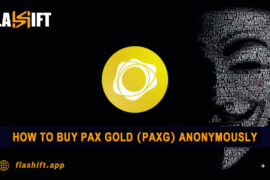Atomic Swaps | In the rapidly evolving world of decentralized finance, the need for seamless cross-chain trading has given rise to a powerful innovation: atomic swaps. These smart contracts enable trustless, peer-to-peer exchanges of cryptocurrencies across different blockchains, without relying on intermediaries like exchanges or custodians. But what exactly are atomic swaps, and how do they work in practice? In this guide, we’ll explore the technology behind atomic swaps, break down the role of hash time-locked contracts (HTLCs), and examine their significance for the broader crypto ecosystem in 2025.
The Evolution of Crypto Trading: From Centralized to Decentralized Solutions
In the early days of cryptocurrency, trading primarily took place on centralized exchanges (CEXs) such as Binance and Coinbase. These platforms provided liquidity and ease of use, but they required users to place their trust in a third party with their funds. Over time, issues like exchange hacks, government regulations, and fund mismanagement—highlighted by events such as Mt. Gox and FTX—raised concerns about the safety of centralized trading.
To address these challenges, decentralized exchanges (DEXs) have emerged, giving users greater control over their assets. However, DEXs are often limited to specific blockchain ecosystems, making cross-chain trades difficult. That’s where Atomic Swaps come in—allowing users to trade cryptocurrencies across various blockchains without intermediaries.
To exchange Tether (USDTERC20) to Bitcoin (BIT) in one second, Flashift is the easiest way.

What Does an Atomic Swap Mean?
An atomic swap is a type of smart contract that enables two parties to exchange cryptocurrencies directly, across different blockchains, without the need for a trusted third party such as an exchange or broker. The term “atomic” refers to the fact that the transaction is either completed in its entirety, or not at all—meaning there is no risk of one party failing to deliver their part of the swap.
This mechanism leverages Hash Time-Locked Contracts (HTLCs), which require both parties to reveal cryptographic secrets within a limited time frame to complete the swap. If either party fails to comply, the transaction is automatically reversed, ensuring that no funds are lost.
Atomic swaps represent a significant step towards decentralized, trustless trading, and they’re becoming increasingly important in today’s multi-chain DeFi environment. By removing the need for custodians, they offer a secure and private way to exchange value across different blockchain networks.
How Do Atomic Swaps Work?
Atomic swaps rely on a clever cryptographic mechanism known as a Hash Time-Locked Contract (HTLC) to ensure fairness and security. HTLCs are designed to create conditional transactions that only execute if specific cryptographic secrets are revealed within a set timeframe.
Hash Time-Locked Contracts (HTLCs) Explained
An HTLC has two core components:
-
Hash Lock: The transaction can only be completed if the recipient reveals a secret cryptographic hash (a one-way mathematical fingerprint) within the time limit.
-
Time Lock: If the hash isn’t revealed in time, the transaction is automatically reversed, returning funds to the sender.
This ensures that either both parties complete their end of the deal or no swap occurs at all—there’s no middle ground.
Step-by-Step Example
Here’s a simplified sequence of how an atomic swap works:
-
Party A (e.g., Alice) wants to swap Bitcoin (BTC) for Litecoin (LTC) with Party B (e.g., Bob).
-
Alice generates a secret value (the hash) and creates an HTLC transaction on the Bitcoin blockchain, locking her BTC.
-
Alice shares the cryptographic hash (not the secret itself) with Bob.
-
Bob uses that hash to create an HTLC transaction on the Litecoin blockchain, locking his LTC.
-
Alice reveals the secret value to claim Bob’s LTC.
-
Bob can now see the secret value on the blockchain and uses it to claim Alice’s BTC.
The process ensures that either both assets are exchanged or no assets change hands—achieving trustless, peer-to-peer swaps.
Example: Bitcoin-to-Litecoin Swap
Let’s say Alice and Bob are swapping 1 BTC for 100 LTC:
-
Alice locks 1 BTC in an HTLC with a hash lock on Bitcoin.
-
Bob locks 100 LTC in an HTLC with the same hash lock on Litecoin.
-
Alice redeems 100 LTC by revealing the secret.
-
Bob uses that revealed secret to redeem 1 BTC.
-
If either fails to redeem within the time lock, the funds automatically return to their original owners.
This robust approach eliminates the need for a third-party intermediary while preserving security and fairness.
Why Are Atomic Swaps Important?
Atomic swaps are a breakthrough innovation in the world of blockchain and cryptocurrency, offering several key advantages for traders, developers, and everyday users.
Eliminate Intermediaries
One of the most significant benefits of atomic swaps is the elimination of trusted third-party intermediaries. Traditionally, exchanging different cryptocurrencies requires using centralized exchanges or brokers. Atomic swaps, however, enable peer-to-peer trading directly on-chain, removing the need for custodians or middlemen. This reduces counterparty risk and puts users back in control of their assets.
Enhance Privacy and Security
By design, atomic swaps preserve user privacy and boost security. Transactions happen directly between wallets on separate blockchains, and there’s no need to deposit funds on an exchange or reveal personal information. Because swaps rely on cryptographic proofs, users don’t have to trust any third party — they only trust the mathematical integrity of the blockchain itself.
Lower Trading Fees
Centralized exchanges often impose trading fees, withdrawal fees, and other costs that can eat into profits. Atomic swaps reduce these costs by enabling direct swaps without intermediaries. While network transaction fees still apply on each blockchain, there are no centralized exchange fees or markups, making swaps more cost-effective in the long run.
Atomic swaps represent a powerful step forward in creating a truly decentralized trading ecosystem, offering greater control, lower costs, and enhanced security for participants.
How Atomic Swaps Enable Cross-Chain Transactions
Cryptocurrency trading has traditionally been limited to specific blockchain ecosystems. To trade Bitcoin for Ethereum, you typically had to go through a centralized exchange or use wrapped tokens. However, Atomic Swaps have revolutionized the process by enabling direct cross-chain transactions without intermediaries. But how do they work? Let’s break it down.

The Technology Behind Atomic Swaps: HTLC and Smart Contracts Explained
Atomic Swaps’ core is Hacked Time-Locked Contracts (HTLCs), a unique type of smart contract that ensures both parties either complete a trade simultaneously or cancel it, returning funds to their original owners. Here’s how HTLCs work:
- Hash Lock: A cryptographic key that acts as a “lock is generated.” The swap can only be completed if both traders provide the correct key.
- Time Lock: A deadline is set, ensuring that the funds automatically return to the original owners if the swap isn’t completed in time.
This trustless mechanism ensures that neither party can cheat the other. Smart contracts enforce the swap conditions without requiring a centralized authority, making the process transparent and secure.
On-Chain vs. Off-Chain Atomic Swaps: What’s the Difference?
Atomic Swaps can take place on-chain or off-chain, each with its advantages:
On-Chain Atomic Swaps
- Conducted directly on the blockchain.
- Both assets must be on compatible blockchains with HTLC support (e.g., Bitcoin and Litecoin).
- Secure but can be slower due to network congestion and transaction fees.
Off-Chain Atomic Swaps
- Take place on second-layer solutions like the Lightning Network.
- It is faster and cheaper since they don’t require on-chain confirmations.
- It is ideal for frequent, smaller trades where speed matters.
While on-chain swaps are more decentralized and transparent, off-chain swaps offer better efficiency for high-speed trading. Platforms like Flashift strive to integrate both solutions, making cross-chain swaps more seamless for traders.
The table below summarizes the differences in simple words:
| Feature | On-Chain Atomic Swaps | Off-Chain Atomic Swaps |
| Speed | Slower (depends on blockchain confirmation times) | Faster (uses off-chain networks) |
| Security | High (settled on main blockchain) | High (via off-chain smart contracts) |
| Scalability | Limited (relies on block time) | High (ideal for frequent trades) |
| Examples | BTC-ETH Atomic Swap | Lightning Network Swaps |
How Cross-Chain Crypto Trading Works Without Intermediaries
Traditional crypto trading relies on centralized intermediaries, meaning users must:
- Deposit funds into an exchange.
- Trust the platform to process their trades.
- Withdraw funds (if the exchange allows it).
With Atomic Swaps, this process is entirely peer-to-peer, removing risks like exchange hacks, withdrawal limits, and high fees.
Here’s how a cross-chain swap works step by step:
- Alice wants to swap 1 BTC for Bob’s 50 LTC.
- She creates an HTLC that locks her BTC and generates a secret key.
- Bob creates an HTLC on the Litecoin network, locking 50 LTC.
- Alice reveals her secret key, unlocking Bob’s LTC.
- Bob uses the same key to unlock Alice’s BTC.
Result: The swap is completed securely without an exchange or third party!
This decentralized approach empowers traders, making cross-chain transactions faster, safer, and more private.

Benefits and Risks of Using Atomic Swaps
Atomic Swaps are revolutionizing crypto trading, offering a trustless, decentralized, and secure way to exchange assets across blockchains. However, like any technology, they come with advantages and challenges. This section will explore atomic swaps’ benefits, potential risks, and future in the evolving crypto landscape.
Advantages of Atomic Swaps: Security, Privacy, and Decentralization
- Enhanced Security: One of the most significant advantages of Atomic Swaps is the elimination of intermediaries. Unlike centralized exchanges (CEXs) that store users’ funds and are vulnerable to hacking, Atomic Swaps allows direct peer-to-peer transactions. This significantly reduces the risk of hacks, fraud, and exchange failures (like what happened with FTX and Mt. Gox).
- Privacy Protection: Atomic Swaps offer greater anonymity than centralized platforms, requiring verification of Know Your Customer (KYC). Since swaps happen directly on the blockchain, users don’t need to share personal information, making transactions more private.
- True Decentralization: Traditional exchanges control the trading environment, imposing fees, withdrawal limits, and trading restrictions. In contrast, Atomic Swaps empowers users by giving them complete control over their assets and enabling trustless transactions without central authority.
- Lower Costs: By bypassing exchanges, traders avoid deposit, withdrawal, and trading fees. This makes Atomic Swaps a cost-effective alternative, especially for frequent traders looking to reduce expenses.
- Interoperability & Flexibility: Atomic Swaps facilitate seamless cross-chain trading, breaking the barriers between blockchain networks. This interoperability allows traders to exchange assets across various blockchains without needing wrapped tokens or third-party bridges.
Challenges and Risks: Liquidity Issues, Speed, and Technical Barriers
- Liquidity Concerns: One of the main limitations of atomic swaps is low liquidity. Unlike centralized exchanges with deep order books, atomic swaps require two traders willing to swap exact amounts of assets. Users may struggle to find a counterparty if the market for a particular swap pair is limited.
- Speed & Efficiency: On-chain atomic swaps depend on block confirmations, which can be slow, especially on networks like Bitcoin. This makes real-time trading impractical compared to high-speed CEXs and off-chain solutions like the Lightning Network.
- Technical Complexity: Unlike simple CEX trades, atomic swaps require users to generate cryptographic keys, manage HTLCs, and ensure compatibility between blockchain networks. While platforms like Flashift simplify the process, the technology is still not as user-friendly as traditional exchanges.
- Blockchain Compatibility: Not all blockchains support atomic swaps. Both networks must have compatible HTLC implementations and support the same hashing algorithm to participate. This limits the number of available trading pairs and excludes blockchains with incompatible architectures.
Are Atomic Swaps the Future of Crypto Trading?
Yes, but with improvements. While Atomic Swaps provide an innovative way to trade assets securely and privately, challenges like liquidity, speed, and usability must be addressed for mass adoption.
- The rise of Layer 2 solutions (e.g., the Lightning Network) is already making Atomic Swaps faster and more efficient, helping overcome speed limitations.
- More user-friendly platforms like Flashift simplify the process, making it accessible to non-technical users.
- Growing demand for decentralization is pushing the industry toward trustless trading solutions, making Atomic Swaps essential to the future of crypto.
As blockchain interoperability improves and developers refine the technology, atomic swaps could become the preferred method for secure, decentralized, and cost-effective trading.
Flashift is committed to making Atomic Swaps accessible to everyone. A simple, secure, and efficient platform empowers traders to swap assets across chains—without intermediaries. The future of crypto trading is decentralized, and Flashift is at the forefront of this evolution!
Best Platforms That Support Atomic Swaps in 2025
As Atomic Swaps gains popularity, more platforms are integrating this technology to offer trustless, decentralized, and secure cross-chain trading. In this section, we’ll explore the leading decentralized exchanges (DEXs) and wallets that support Atomic Swaps, compare their features, and help you choose the best platform for seamless cross-chain trading.
Several platforms have embraced atomic swaps, providing users with non-custodial, cross-chain trading solutions. Flashift is a fast-growing platform designed for hassle-free atomic swaps, allowing users to swap assets across blockchains without intermediaries. Flashift simplifies the atomic swap process, making it user-friendly while maintaining high security.
Final Thoughts
Atomic Swaps are shaping the future of decentralized trading, allowing users to swap assets without relying on centralized intermediaries. Platforms like Flashift leads the way in trustless cross-chain transactions, each with strengths. By selecting Flashift, traders can enjoy secure, cost-effective, and efficient cross-chain swaps.
Ready to experience hassle-free Atomic Swaps? Check out Flashift and start swapping today!
FAQs:
- What is an Atomic Swap?
An Atomic Swap is an innovative contract-based technology that enables the direct exchange of cryptocurrencies between two blockchains without a centralized exchange or intermediary.
- How do Atomic Swaps ensure security?
Atomic Swaps use Hash Time-Locked Contracts (HTLCs), which require both parties to confirm the transaction within a specified time frame. If the conditions aren’t met, the funds are automatically refunded, ensuring security.
- What are the benefits of Atomic Swaps over traditional exchanges?
Atomic Swaps offer greater privacy, lower fees, and enhanced security compared to centralized exchanges. They eliminate third-party risks and allow peer-to-peer transactions.
- Can I perform an Atomic Swap with any cryptocurrency?
Atomic Swaps are only possible between cryptocurrencies that support HTLCs and have compatible scripting languages, such as Bitcoin (BTC), Litecoin (LTC), and some ERC-20 tokens.







